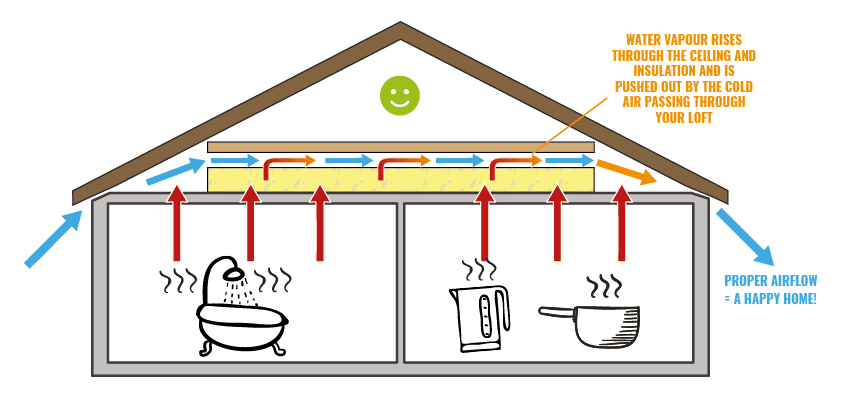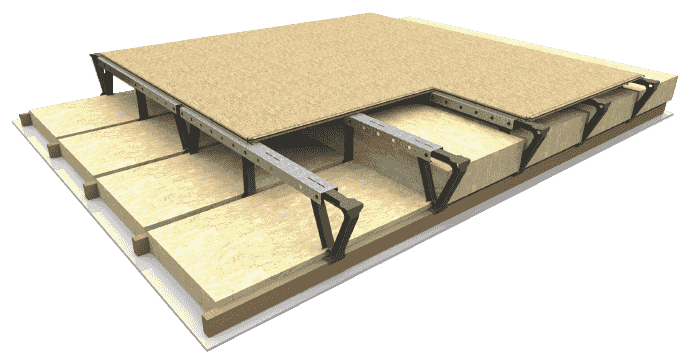
Condensation is caused when water vapour comes into contact with cold surfaces and condenses to form dampness or water droplets.
Air can contain varying amounts of water vapour and the warmer the air the more water vapour is held. When warm air comes into contact with a colder surface, it cools down and can’t retain the same amount of vapour, which is then released and forms condensation.
Water vapour is invisible in the air and is formed when you carry out normal daily activities in the home. Normal daily activities in the living area of the home (such as taking showers and baths, washing and drying clothes, cooking and boiling kettles) produce warm air containing a large amount of water vapour. If the warm air can’t escape through an open window or air vent, it moves around until it finds a cold surface (which is usually the roof space) where it cools and forms condensation.

Condensation in the roof space is not normally a building fault. It can also occur in a new home because building materials, such as mortar and plaster, contain a lot of moisture. Water vapour is formed as the materials dry out when the home is lived in and heated. This is a slow process that takes some time to complete.
Insulation
Insulation laid on top of the ceiling in the roof space is an effective way of conserving energy and helps to keep the home warm. The amount of insulation that’s required to meet modern standards greatly reduces the amount of heat that enters the roof space from the rooms below. This can increase the risk of condensation because the surfaces in the roof normally remain colder than the rooms below. Most cases of condensation in roof spaces are temporary. They can happen when the weather is cold, or when it changes between warm and cold, or when there is a big temperature drop between day and night.
Controlling condensation
Controlling condensation in the roof space is imperative and the best preventative measure is ensuring an adequate airflow at all times within the roof space. Water vapour can pass through most building materials and will enter the roof space through the plasterboard ceilings. A greater amount can enter through air gaps in ceilings, such as around cables, pipes, loft hatches and downlighters. You are unlikely to prevent condensation in the roof space completely, but you should aim to reduce it to a level so that it doesn’t cause problems. Therefore, it is important to control the build up of water vapour in the loft space by ensuring appropriate measures are taken to ensure the best possible airflow through the space.
The LoftZone StoreFloor Solution
The LoftZone StoreFloor system is the perfect solution to getting more airflow into your roof space and thereby reducing condensation in your home.

More information available on the NHBC website.
Ready to Book a Free Survey?
Our survey is completely free with no obligation to go ahead and unlike many of our competitors, we never use hard selling tactics!
Get started today

